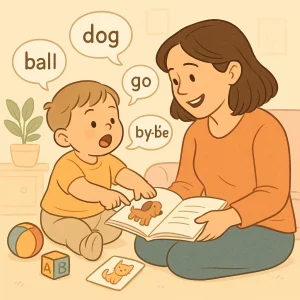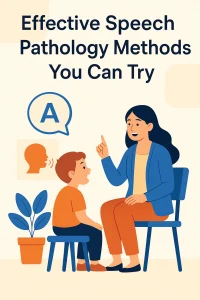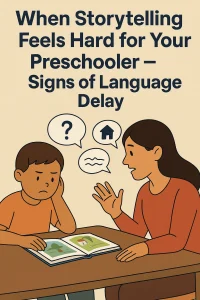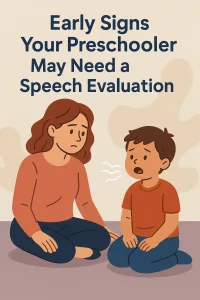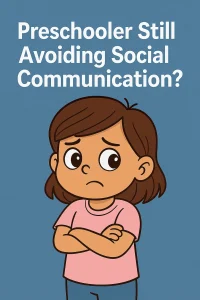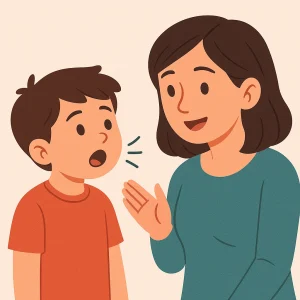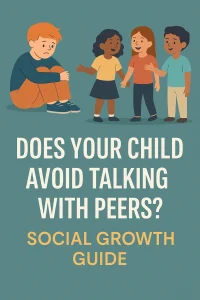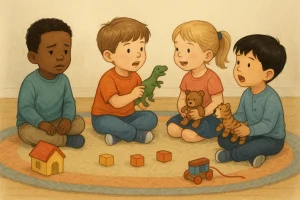Autism in Girls: 12 Early Signs Parents Often Miss
By Rajini D
Last Updated: May 8, 2024
If you’re a parent or caregiver, you might have wondered if your daughter shows signs of autism. Autism, often called Autism Spectrum Disorder (ASD), affects people in different ways. While many people associate autism with boys, it’s important to recognize that girls can also be on the spectrum. However, the signs of autism in girls can be subtle and sometimes overlooked.
Understanding the early signs of autism in girls can make a significant difference in their lives. Early recognition leads to early intervention, which is crucial for better support and development. By being aware of these signs, you can ensure that your daughter receives the help and resources she needs to thrive.
Understanding Autism in Girls
When thinking about autism, most people picture boys. However, autism can look different in girls, leading to underdiagnosis. This means that many girls go undetected because their symptoms don’t fit the typical “autism mold” we’ve come to expect.
Underdiagnosis of Autism in Girls
The reason for this underdiagnosis is often due to the differing ways boys and girls present with autism. Boys might display more obvious traits, while girls might internalize their feelings or mimic socially acceptable behaviors to fit in. This phenomenon, known as “masking” or “camouflaging,” helps girls hide their challenges, making it harder for parents, teachers, and even healthcare professionals to identify autism.
Comparison of Autism Signs in Boys and Girls
| Signs | Boys | Girls |
|---|---|---|
| Social Interaction | Boys with autism often display more noticeable social challenges, such as difficulties in making and keeping friends or engaging in group activities. | Girls with autism may mimic or camouflage their social challenges, making it harder to notice. They might also be more shy or reserved in social settings. |
| Behavioral Signs | Boys with autism tend to engage in more repetitive behaviors, such as hand-flapping or rocking. | Girls with autism might have more subtle repetitive behaviors, such as hair twirling. Their behaviors might be seen as quirky. |
| Communication | Boys with autism are often delayed in language development, leading to noticeable communication challenges. | Girls with autism may have advanced language skills but struggle with social communication, such as understanding social cues or engaging in small talk. |
| Emotional Regulation | Boys with autism may have meltdowns in public or express their frustrations openly. | Girls with autism may hold in their emotions in public but have meltdowns at home where they feel safe to express themselves. |
| Diagnosis | Boys with autism are typically diagnosed earlier, often due to more noticeable symptoms. | Girls with autism are often diagnosed later, as their symptoms may be less obvious or masked. |
Also Read: Autism vs. Down Syndrome: Understanding the Differences
Masking or Camouflaging in Girls
Masking is a coping mechanism where girls with autism intentionally mimic or imitate socially acceptable behaviors to blend in. They might closely observe their peers and then adopt their mannerisms or phrases to avoid standing out. While this helps them fit in socially, it can be exhausting and lead to anxiety or other emotional issues later on.
It’s important to recognize that these girls might appear to be socially successful, but they could be struggling internally. The effort of maintaining this façade can lead to burnout or mental health issues. If you notice that your daughter is “putting on a show” socially and then feeling drained afterward, it might be a sign of autism.
By understanding these nuances, parents and caregivers can better identify the early signs of autism in girls and seek appropriate support. For more detailed insights into autism, visit Wellness Hub. We offer a range of resources to help you understand and navigate autism, including speech therapy and occupational therapy.
Key Early Signs of Autism in Girls
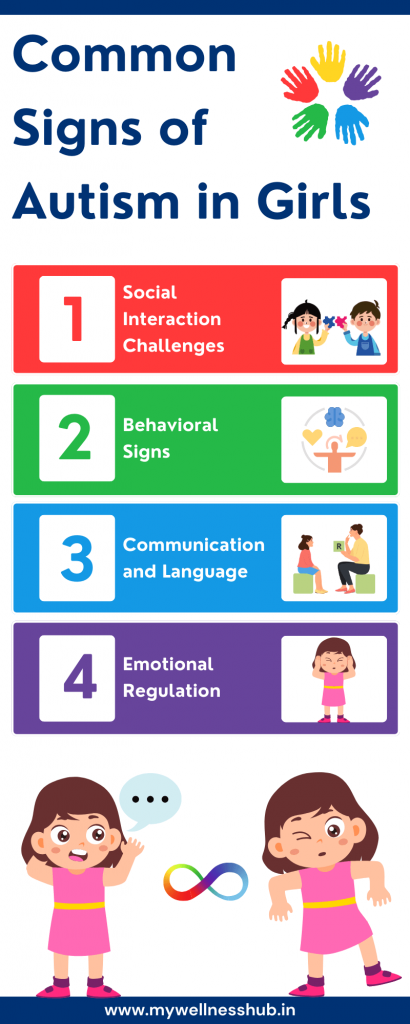
Identifying the early signs of autism in girls can be challenging because they often present differently than in boys. It’s important for parents and caregivers to recognize these signs early on, as early intervention can make a significant difference. Below are some key signs to watch for:
Social Interaction Challenges
Girls with autism may have difficulty forming and maintaining friendships. If you notice that your daughter prefers the company of adults or enjoys playing alone, it could be a sign. People might describe her as shy, passive, or even as a “teacher’s pet.” These characteristics can sometimes mask her challenges, but they highlight her difficulty navigating social situations.
Behavioral Signs
Girls with autism may engage in repetitive behaviors like hair twirling or display intense interest in specific subjects, such as art or animals. These behaviors might seem quirky but are often a sign of autism. Additionally, they may exhibit a strong adherence to rules and have a well-developed sense of justice. These traits, while admirable, might also indicate their difficulty adapting to changes or understanding social cues.
Communication and Language
While girls with autism might have advanced language skills, they often struggle with the social use of language. They might use stock phrases or mimic others in social situations, which can seem charming but also indicate their difficulty engaging in spontaneous conversation. If your daughter echoes phrases or relies heavily on learned scripts, it might be a sign of autism.
Know more: What is the Relation between Communication, Speech and Language? | Speech and Language Therapy
Emotional Regulation
One of the most telling signs of autism in girls is their struggle with emotional regulation. They might display signs of anxiety or depression, especially when at home. Many girls with autism are adept at masking their struggles in public but have emotional releases through meltdowns after school. If your daughter seems unusually stressed or overwhelmed at home, it could be an indication that she’s struggling to cope with the demands of social interaction.
Why Early Recognition Matters
Recognizing the early signs of autism in girls is crucial for their long-term well-being. Late diagnosis can lead to a range of challenges, including potential mental health issues. Girls with undiagnosed autism may struggle with anxiety, depression, and low self-esteem as they try to cope with social and emotional challenges without understanding their experiences.
Impact of Late Diagnosis
When autism is not recognized early, girls may develop unhealthy coping mechanisms, leading to increased stress and burnout. They may also face challenges in school, finding it hard to make friends or understand social cues, which can affect their academic performance and self-confidence. Without a diagnosis, they might feel “different” or “defective,” leading to isolation and mental health problems during their teenage years and beyond.
Read more: Types of Anxiety Disorders and their Symptoms
Benefits of Early Intervention
Early intervention and support can make a significant difference for girls with autism and their families. When autism is identified early, children can receive targeted therapies, such as speech therapy and behavior therapy, which help them develop crucial skills and manage challenges. Families also benefit from early diagnosis by gaining access to resources and support, helping them understand and navigate their child’s unique needs.
Practical Checklist for Parents and Educators
Identifying the early signs of autism in girls can be challenging, but a practical checklist can help parents and educators recognize potential indicators. Here’s a concise checklist based on the key signs discussed earlier:
- Social Interaction Challenges:
- Difficulty forming and maintaining friendships.
- Preferring the company of adults or playing alone.
- Described as shy, passive, or a “teacher’s pet.”
- Behavioral Signs:
- Engaging in repetitive behaviors like hair twirling.
- Intense interests in specific subjects.
- Strong adherence to rules and a developed sense of justice.
- Communication and Language:
- Advanced language skills but struggles with the social use of language.
- Using stock phrases or mimicking others in social situations.
- Emotional Regulation:
- Signs of anxiety or depression, especially evident at home.
- Emotional release through meltdowns after school.
Supporting Girls with Autism
Supporting girls with autism is crucial for their well-being and development. As a parent or educator, providing appropriate support and understanding can make a world of difference. Here are some tips on how to create a supportive and understanding environment for girls with autism:
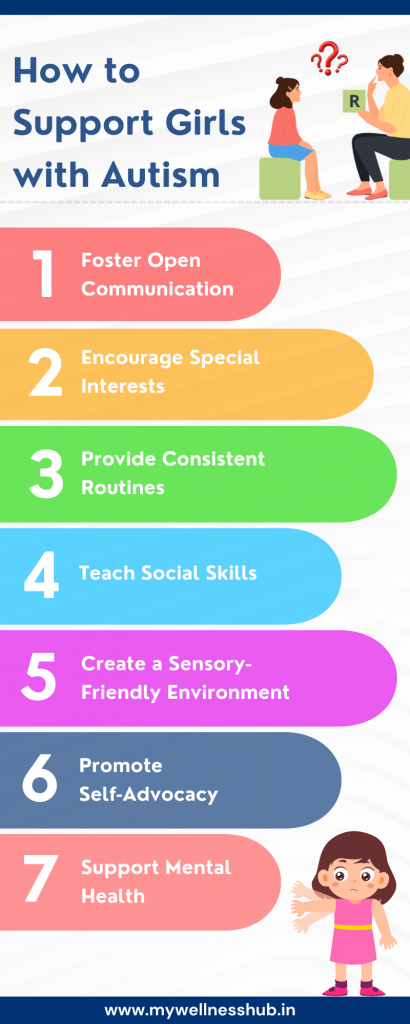
1. Foster Open Communication
Encourage open and honest communication with your child or student. Let them know that they can express their feelings and concerns without judgment. Girls with autism might struggle with communication, so creating a safe space where they feel heard and understood is important.
2. Encourage Special Interests
Many girls with autism have intense interests or hobbies. Encourage and support these interests, as they can be a source of comfort and confidence. Use these interests as a way to connect with them and to motivate them in other areas of their lives.
3. Provide Consistent Routines
Creating a structured environment with consistent routines can help girls with autism feel more secure. Predictability reduces anxiety and helps them understand what to expect, both at home and at school. Use visual schedules or written plans to help them navigate their day.
4. Teach Social Skills
Social situations can be challenging for girls with autism. Teach and model appropriate social skills, such as making eye contact, taking turns, and understanding social cues. Role-playing and social stories can be effective tools for practicing these skills in a supportive setting.
5. Create a Sensory-Friendly Environment
Many girls with autism have sensory sensitivities. Be mindful of their sensory needs and create environments that are comfortable for them. This might include reducing noise, dimming lights, or providing sensory breaks when needed.
6. Promote Self-Advocacy
Empower girls with autism to advocate for themselves. Teach them to recognize and communicate their needs and preferences. Encourage them to speak up when they need a break, are feeling overwhelmed, or need support.
7. Support Mental Health
Girls with autism are at risk of developing mental health challenges, such as anxiety or depression. Be attentive to their emotional well-being and seek professional help if needed. Encourage activities that promote relaxation and stress relief, such as exercise, mindfulness, or creative expression.
Creating a Supportive Environment
Creating a supportive and understanding environment at home and school is key to helping girls with autism thrive. By fostering open communication, encouraging special interests, and providing consistent routines, you can help them navigate the challenges they face. Additionally, teaching social skills, creating sensory-friendly environments, promoting self-advocacy, and supporting their mental health are all crucial aspects of support.
Conclusion
Recognizing the early signs of autism in girls is crucial for their well-being. By being attentive to the unique ways that autism manifests in girls, parents, and teachers can take proactive steps to provide support and intervention. Early recognition and intervention can prevent potential mental health challenges and help girls with autism thrive. If you notice any signs of autism in your child or student, it’s important to seek advice from a specialist.
At Wellness Hub, we are dedicated to helping families navigate the complexities of autism. We offer services like speech therapy, occupational therapy, and behavior therapy designed to support children with autism and their families. If you suspect your child may be showing early signs of autism, don’t hesitate to reach out for support.
Frequently Asked Questions:
1. What are the early signs of autism in girls?
Early signs of autism in girls may include difficulty in forming friendships, engaging in repetitive behaviors, intense interests, and challenges with social use of language. They might also experience emotional regulation issues like anxiety or meltdowns.
2. How does autism present differently in girls compared to boys?
Autism in girls often presents differently than in boys. Girls may be more likely to mask or camouflage their symptoms, mimicking socially acceptable behaviors to fit in. They might also be less disruptive and more adept at blending in socially.
3. Why is it important to recognize the early signs of autism in girls?
Recognizing early signs of autism in girls is important because early intervention can prevent potential mental health challenges and help girls thrive. Early diagnosis allows for targeted support and therapies, which can significantly improve outcomes.
4. How can parents and teachers support girls with autism?
Parents and teachers can support girls with autism by fostering open communication, encouraging special interests, providing consistent routines, teaching social skills, creating sensory-friendly environments, promoting self-advocacy, and supporting mental health.
5. What should I do if I suspect my daughter has autism?
If you suspect your daughter has autism, it’s important to consult with a specialist for assessment and diagnosis. Early recognition and intervention can help your daughter receive the support and resources she needs.
6. Can girls with autism lead fulfilling lives?
Yes, with the right support and understanding, girls with autism can lead fulfilling and successful lives. Early intervention, appropriate therapies, and a supportive environment can help them thrive and reach their full potential.
7. What resources are available for girls with autism and their families?
There are many resources available for girls with autism and their families. For example, at Wellness Hub, we offer services like speech therapy, occupational therapy, and behavior therapy to support children with autism and their families.
8. Why are girls with autism often underdiagnosed?
Girls with autism are often underdiagnosed because they tend to mask their symptoms or blend in socially. The presentation of autism in girls can be subtler and different from the typical symptoms seen in boys, leading to delayed or missed diagnoses.
9. How does early intervention benefit girls with autism?
Early intervention benefits girls with autism by providing targeted support and therapies, which can improve their communication, social skills, and overall development. It can also help prevent potential mental health challenges and promote positive outcomes.
10. What is masking or camouflaging in girls with autism?
Masking or camouflaging in girls with autism refers to the coping mechanism where they imitate socially acceptable behaviors to fit in. This can make their symptoms less noticeable, but it can also lead to stress and burnout if they are not properly supported.
About the Author:
Rajini Darugupally
M.Sc., Speech-Language Pathologist (9+ years of experience)
Rajini is a passionate and dedicated Speech-Language Pathologist with over 9+ years of experience, specializing in both developmental speech and language disorders in children and rehabilitation in adults. Driven by a desire to empower each individual to find their voice, Rajini brings a wealth of experience and a warm, genuine approach to therapy.
Currently, at Wellness Hub, she thrives in a team environment that values innovation, compassion, and achieving results for their clients.
Connect with Rajini to learn more about how she can help you or your loved one find their voice.
Book your Free Consultation Today
Parent/Caregiver Info:
Client’s Details:
* Error Message
